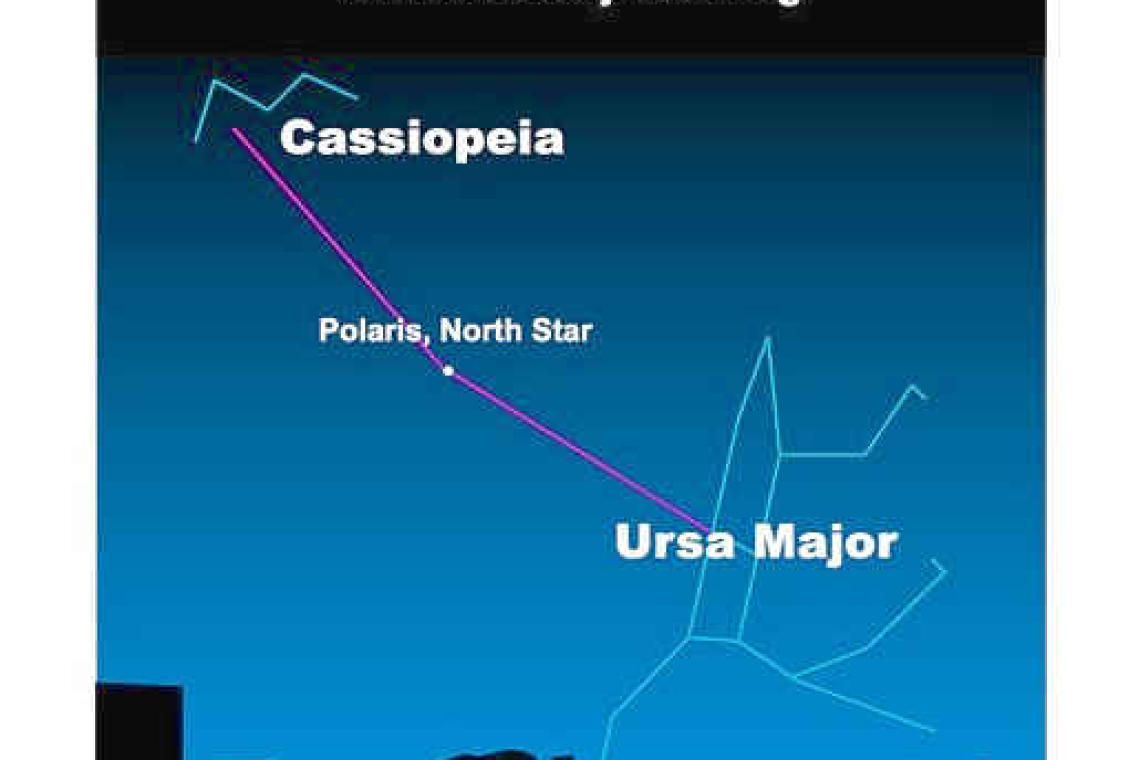~ St. Maarten’s Backyard Astronomy for January 13 - 15 ~
Sun rises at 6:46am
Sun sets at 5:55pm
Lunar phase: 3rd quarter, waning gibbous
Moon rises at 12:50am, Sunday
Moon sets at 12:19pm, Sunday
This weekend, let’s focus on the northern sky, but try to keep your gaze low to the horizon. You might need a little elevation to gain perspective and have a clear view. A balcony or hillside could make the difference in whether you see the full picture. We want to find two prominent constellations, as well as the North Star, Cassiopeia the Queen on her throne and the Great Dog, Canis Major.
For a little refresher: Canis Major is the name of the true constellation, but most of us know it as the Big Dipper. Canis Minor, or the Lesser Dog, is commonly called the Little Dipper. The two dippers as well as the Queen dominate the northern sky. The last star in the “handle of the Little Dipper” is Polaris, the North Star, and the most important navigational star in the entire sky.
By the way, did you know that the northern night sky is the model on which all our analogue clocks are historically designed? The centre of the clock, the pivot point of the minute and hour hands, represents Polaris. The hour hand represents the other stars rotating around the centre point. If you used a 24-hour clock, such as is common in the military, the hour hand points to the sun’s location – with noon pointing straight up and midnight pointing straight down.
Cassiopeia and the Big Dipper revolve in a tight circle around Polaris. They are always on opposite sides of the North Star, so one will be rising on the eastern side while the other is setting on the western side. If one is located above Polaris, the other will be below, and – at our latitude here on St. Maarten – that means the other is hidden below the horizon.
Okay, so this weekend (say Saturday night) after sunset, you can see Cassiopeia sitting high above the north star; and as the night grows older, you will see it drift down and to the northwest. Meanwhile, the Big Dipper starts the evening below our horizon and rises by 10:00pm to climb up from the north-eastern edge of the sky. The evening sky will be moonless this weekend; look for the moon to rise in the wee hours of the morning. A daytime moon will hang in the western sky, setting by around midday.
Thank you for keeping up with the Night Sky articles, backyard astronomy designed for St. Maarten sky viewing. FYI: If you are out later on in the week, note that each star rises about four minutes earlier each day than written here, and the moon rises 50 minutes later. Night Sky is researched and compiled by Lisa Davis-Burnett. Earthsky.org is a key resource for information and images. Questions or comments? Email This email address is being protected from spambots. You need JavaScript enabled to view it.







